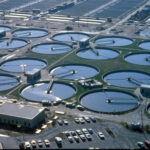Humic acid is a naturally occurring organic substance widely employed as an additive in drilling fluids within the oil and gas industry, as well as in other drilling applications such as geothermal and water well drilling. Derived from decomposed organic matter like lignite, peat, or coal, humic acid possesses unique chemical and physical properties that enhance the performance of drilling fluids.
What is Humic Acid?
Humic acid is a complex mixture of organic molecules formed through the microbial decomposition of plant and animal matter over long periods. It is typically extracted from lignite or leonardite, a type of soft coal rich in humic substances. Chemically, humic acid contains functional groups such as carboxyl, hydroxyl, and phenolic groups, which give it the ability to interact with water, minerals, and other components in drilling fluids. These properties make it an effective and versatile additive for improving the efficiency and stability of drilling operations.
Role of Humic Acid in Drilling Fluids
Drilling fluids, commonly referred to as drilling muds, are critical in drilling operations. They serve multiple purposes, including:
- Cooling and lubricating the drill bit.
- Transporting drill cuttings to the surface.
- Stabilizing the wellbore to prevent collapse.
- Controlling formation pressures to avoid blowouts.
- Minimizing formation damage.
Humic acid is added to both water-based muds (WBM) and, in some cases, oil-based muds (OBM) to enhance these functions. Its inclusion improves the fluid’s ability to handle challenging drilling conditions, such as high temperatures, reactive formations, or high-pressure environments.
Detailed Functions and Benefits
Humic acid contributes to drilling fluid performance in several key ways:
- Viscosity and Rheological Control:
- Drilling fluids need to maintain a specific viscosity to carry cuttings effectively while remaining pumpable. Humic acid acts as a viscosifier, helping to achieve and maintain the desired fluid consistency.
- It improves the rheological properties of the fluid, ensuring it flows properly under shear stress and maintains stability across a range of temperatures and pressures. This is particularly important in deep wells where conditions can vary significantly.
- By enhancing the gel strength of the fluid, humic acid helps suspend cuttings when circulation stops, preventing blockages in the wellbore.
- Fluid Loss Control:
- One of the critical challenges in drilling is preventing the drilling fluid from seeping into permeable formations, which can destabilize the wellbore or damage the reservoir. Humic acid helps form a thin, low-permeability filter cake on the wellbore wall, reducing fluid loss.
- Its colloidal properties allow it to plug small pores and fractures in the formation, minimizing filtrate invasion and maintaining well integrity.
- Effective fluid loss control also reduces the volume of drilling fluid required, lowering operational costs.
- Shale Stabilization:
- Shales, which are common in many drilling environments, are prone to swelling and disintegration when exposed to water-based fluids. This can lead to wellbore instability, stuck pipes, or even borehole collapse.
- Humic acid interacts with clay minerals in shales, coating their surfaces and reducing water absorption. This inhibits hydration and swelling, stabilizing the formation.
- By mitigating shale reactivity, humic acid reduces the risk of costly delays and equipment damage.
- Environmental Benefits:
- As a naturally occurring substance, humic acid is biodegradable and has low toxicity, making it an environmentally friendly alternative to some synthetic additives.
- Its use aligns with increasing regulatory and industry emphasis on sustainable drilling practices, particularly in environmentally sensitive areas such as offshore or nearshore drilling sites.
- Thermal and Chemical Stability:
- Drilling operations, especially in deep or geothermal wells, often encounter high temperatures and pressures. Humic acid remains stable under these conditions, ensuring consistent performance.
- It is compatible with a variety of drilling fluid additives, including salts, polymers, and weighting agents, making it versatile for different formulations.
- Humic acid can also form complexes with metal ions in saline environments, maintaining fluid stability in challenging conditions.
- Lubricity Improvement:
- Friction between the drill string and the wellbore can increase wear on equipment and slow drilling progress. Humic acid enhances the lubricity of the drilling fluid, reducing friction and improving drilling efficiency.
- This also helps extend the lifespan of drilling equipment, reducing maintenance costs.
- Corrosion Inhibition:
- Humic acid can help protect metal components, such as the drill string and casing, by forming a protective layer that reduces corrosion in the presence of water or saline fluids.
- This is particularly valuable in offshore drilling, where exposure to seawater increases corrosion risks.
How Humic Acid Works
The effectiveness of humic acid in drilling fluids stems from its chemical structure. The presence of functional groups like carboxyl and hydroxyl allows it to:
- Bind with water molecules, enhancing fluid viscosity and stability.
- Adsorb onto clay particles, reducing their reactivity with water.
- Form complexes with metal ions, improving fluid performance in high-salinity environments.
- Create a colloidal suspension that aids in forming a robust filter cake.
These interactions enable humic acid to address multiple challenges simultaneously, from stabilizing shales to controlling fluid loss and improving lubricity.
Applications in Drilling
Humic acid is used in various drilling contexts, including:
- Water-Based Muds (WBM): Humic acid is most commonly used in WBM, where it enhances rheology, reduces fluid loss, and stabilizes shales. It is particularly effective in formations with reactive clays.
- Oil-Based Muds (OBM): While less common, humic acid derivatives or modified forms can be used in OBM to improve emulsification and stability, especially in high-temperature environments.
- Geothermal and Water Well Drilling: Humic acid’s environmental compatibility makes it suitable for these applications, where minimizing ecological impact is a priority.
- High-Temperature, High-Pressure (HTHP) Wells: Its thermal stability makes humic acid ideal for deep wells or reservoirs with extreme conditions.
Practical Considerations
While humic acid offers numerous benefits, its use requires careful consideration to maximize effectiveness:
- Concentration Optimization: The amount of humic acid added to the drilling fluid must be carefully controlled. Too little may not provide the desired effects, while too much can overly thicken the fluid, making it difficult to pump. Typical concentrations range from 0.5% to 5% by weight, but this varies based on the fluid system and drilling conditions.
- Compatibility Testing: Humic acid should be tested with other additives in the drilling fluid to ensure no adverse reactions occur, such as flocculation or precipitation.
- Source Variability: The quality and composition of humic acid can vary depending on its source (e.g., lignite vs. leonardite). High-purity humic acid with consistent properties is preferred for predictable performance.
- pH Sensitivity: Humic acid performs best in slightly alkaline conditions (pH 8–10). Adjustments to the fluid’s pH may be necessary to optimize its effectiveness.
- Cost Considerations: While humic acid is generally cost-effective due to its natural abundance, the cost can vary depending on the source and processing. Operators must balance performance benefits with economic factors.
Challenges and Limitations
- Performance Variability: The effectiveness of humic acid can depend on the specific drilling environment, including temperature, pressure, and formation type. Field testing is often required to confirm its suitability.
- Limited Effectiveness in Extreme Conditions: While humic acid is thermally stable, it may degrade in extremely high-temperature environments (above 300°F or 150°C) unless specially formulated.
- Interaction with Other Additives: In complex fluid systems, humic acid may interact with other chemicals, potentially reducing its effectiveness or causing unwanted side effects.
Comparison with Other Additives
Humic acid is often compared to other drilling fluid additives like lignosulfonates, polymers, and synthetic shale inhibitors. Here’s how it stacks up:
- Lignosulfonates: Like humic acid, lignosulfonates are organic additives used for fluid loss control and shale stabilization. However, humic acid may offer better environmental compatibility and lubricity.
- Polymers: Synthetic polymers like polyacrylamide can provide superior viscosity control but are more expensive and less environmentally friendly.
- Shale Inhibitors: Specialized shale inhibitors like potassium chloride or glycol-based additives may outperform humic acid in highly reactive shales but are often more costly and less versatile.
Environmental and Regulatory Considerations
With increasing scrutiny on the environmental impact of drilling operations, humic acid’s natural origin and low toxicity make it an attractive choice. It complies with many environmental regulations, particularly in regions with strict guidelines for drilling fluid disposal. However, operators must ensure that the humic acid used meets regulatory standards for purity and environmental safety.
Case Studies and Industry Use
Humic acid has been successfully used in various drilling operations worldwide:
- In offshore drilling in the North Sea, humic acid-based fluids have been employed to stabilize shales and reduce fluid loss while meeting stringent environmental regulations.
- In geothermal drilling in regions like Iceland, humic acid has been used to enhance fluid performance in high-temperature reservoirs.
- In onshore oil and gas wells in North America, humic acid has been incorporated into water-based muds to improve efficiency and reduce costs in shale-heavy formations.
Future Potential
As the drilling industry continues to prioritize sustainability and cost-efficiency, humic acid is likely to see increased adoption. Research is ongoing to develop modified or synthetic versions of humic acid that offer enhanced performance in extreme conditions. Additionally, advances in extraction and processing techniques may improve the consistency and cost-effectiveness of humic acid, making it a staple in drilling fluid formulations.
Conclusion
Humic acid is a highly effective and environmentally friendly drilling fluid additive that enhances viscosity, reduces fluid loss, stabilizes shales, improves lubricity, and provides thermal and chemical stability. Its natural origin, versatility, and compatibility with various drilling fluid systems make it a valuable tool for improving drilling efficiency and safety. However, its performance depends on proper formulation, testing, and optimization for specific drilling conditions. For operators seeking a balance between performance, cost, and environmental responsibility, humic acid is a compelling choice.









